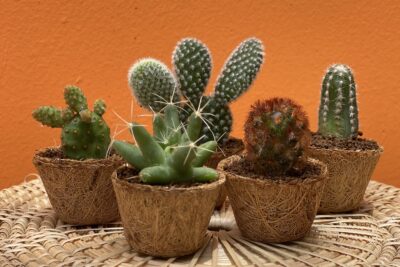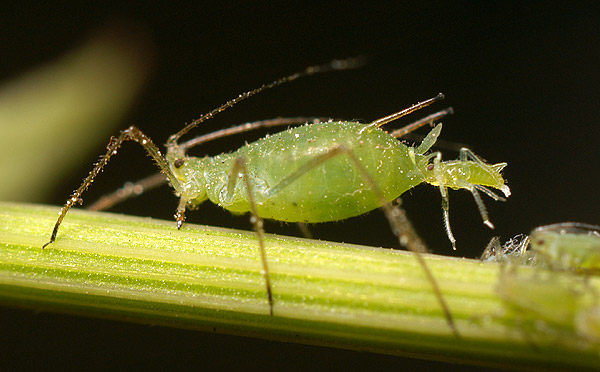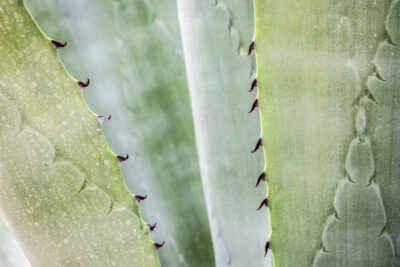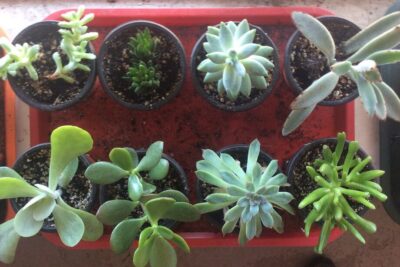
Common Causes and Solutions: Why Your Succulent Died

Succulents have gained immense popularity in recent years, with their unique shapes, vibrant colors, and low maintenance requirements. These plants are known for their ability to store water in their leaves, making them highly adaptable to dry and arid conditions. However, despite their reputation for being easy to care for, many succulent owners have experienced the disappointment of a dying plant. Understanding the common causes of succulent death is crucial for ensuring the long-term health and vitality of these beloved plants.
We will explore the various factors that can contribute to the demise of a succulent and provide practical solutions to prevent such occurrences. We will discuss issues such as overwatering, inadequate sunlight, poor drainage, and pest infestations, which are among the leading causes of succulent death. Additionally, we will provide tips on proper care and maintenance techniques to help you keep your succulents thriving and looking their best. By the end of this article, you will have the knowledge and tools necessary to prevent your succulents from succumbing to common pitfalls and enjoy a flourishing collection of these beautiful plants.
- Lack of sunlight can cause your succulent to die.
- Lack of sunlight can cause your succulent to die.
- Overwatering is a common cause of succulent death.
- Overwatering is a common cause of succulent death.
- Poor drainage can lead to root rot and the eventual death of your succulent.
- Using the wrong type of soil can prevent proper drainage and cause your succulent to die.
- Pests, such as mealybugs or spider mites, can damage your succulent and cause it to die.
- Pests, such as mealybugs or spider mites, can damage your succulent and cause it to die.
- Not providing enough airflow can lead to suffocation and the death of your succulent.
- Transplant shock can occur if you move your succulent to a new pot too quickly, causing it to die.
- Temperature extremes, such as extreme heat or cold, can be fatal to your succulent.
- Temperature extremes, such as extreme heat or cold, can be fatal to your succulent.
- Neglecting your succulent and not providing proper care can result in its death.
- Overfertilizing can cause nutrient burn and ultimately lead to the death of your succulent
- Frequently Asked Questions
Lack of sunlight can cause your succulent to die.
Lack of sunlight can cause your succulent to die.
Succulents are known for their ability to thrive in bright and sunny conditions. However, if your succulent is not receiving enough sunlight, it can lead to its untimely demise. Sunlight is essential for photosynthesis, the process by which plants convert light energy into food. Without adequate sunlight, your succulent may not be able to produce enough energy to survive.
One common mistake that succulent owners make is placing their plants in areas with insufficient light. While succulents can tolerate some shade, they still require several hours of direct sunlight each day. If your succulent is indoors, make sure to place it near a sunny window or use artificial grow lights to supplement the lack of natural sunlight.
It's important to note that too much direct sunlight can also be detrimental to your succulent. If you notice that the leaves are turning brown or becoming translucent, it could be a sign of sunburn. In such cases, provide some shade or move your succulent to a spot with filtered light.
Remember, finding the right balance of sunlight is crucial for the health and survival of your succulent. Monitor its growth and adjust its exposure accordingly to ensure it receives the optimal amount of sunlight.
 Can Succulents Thrive when Transplanted Outdoors?
Can Succulents Thrive when Transplanted Outdoors?Tips for providing adequate sunlight:
- Place your succulent near a south-facing window to maximize sunlight exposure.
- If you have limited access to natural light, consider using artificial grow lights specifically designed for plants.
- Rotate your succulent regularly to ensure all sides receive equal sunlight.
- Monitor the leaves for signs of sunburn or insufficient light and adjust accordingly.
Remember: Succulents need sunlight to thrive, but finding the right balance is key. Too little or too much sunlight can harm your plant. Monitor its growth and adjust its exposure accordingly to ensure its well-being.
Overwatering is a common cause of succulent death.
Overwatering is a common cause of succulent death.
Succulents are known for their ability to store water in their leaves and stems, making them highly resilient to drought conditions. However, many succulent owners make the mistake of overwatering their plants, leading to their untimely demise.
When succulents are overwatered, their roots become waterlogged, preventing them from receiving the necessary oxygen for survival. This can result in root rot, a condition that causes the roots to decay and ultimately leads to the death of the plant.
To prevent overwatering, it is essential to understand the watering needs of your succulent. Most succulents thrive in well-draining soil and require infrequent watering. A general rule of thumb is to water your succulent only when the top inch of soil is dry. Additionally, ensure that the pot has sufficient drainage holes to allow excess water to escape.
If you suspect that your succulent has been overwatered, it is crucial to take immediate action. Remove the plant from its pot and inspect the roots for any signs of rot. Trim away any affected areas and allow the plant to dry out before replanting in fresh soil.
Remember, moderation is key when it comes to watering succulents. By providing them with the right amount of water, you can help ensure their longevity and prevent their premature demise.
 Morning Care: Essential Tips for Maintaining the Beauty of Succulents
Morning Care: Essential Tips for Maintaining the Beauty of SucculentsPoor drainage can lead to root rot and the eventual death of your succulent.
One of the most common causes of succulent death is poor drainage. Succulents thrive in well-draining soil, and if their roots are constantly sitting in water, they can develop root rot. Root rot occurs when the roots are unable to dry out, leading to decay and eventually the death of the plant.
To prevent root rot, it is essential to provide your succulent with a well-draining soil mixture. A good succulent soil mix usually consists of a combination of potting soil, perlite, and coarse sand. This mixture allows excess water to drain away quickly, ensuring that the roots do not become waterlogged.
Additionally, it is crucial to choose a pot with drainage holes. These holes allow excess water to escape, preventing it from pooling at the bottom of the pot. If your pot does not have drainage holes, the water will accumulate, increasing the risk of root rot.
When watering your succulent, it is essential to avoid overwatering. Succulents do not require frequent watering like other houseplants. Instead, they prefer a more arid environment. Always allow the soil to dry out completely between waterings, and water your succulent sparingly.
If you suspect that your succulent is suffering from root rot, it is crucial to act quickly. Carefully remove the plant from its pot and inspect the roots. Healthy roots are firm and white, while rotten roots will appear brown or black and feel mushy. Trim away any affected roots with clean, sterile scissors, making sure to remove all signs of decay.
After removing the rotten roots, allow the plant to dry out for a few days before repotting it in fresh, well-draining soil. Be sure to choose a pot with drainage holes this time. Water the succulent sparingly and monitor its progress closely to ensure it recovers from root rot.
Poor drainage is a common cause of succulent death due to the development of root rot. By providing your succulent with a well-draining soil mixture and a pot with drainage holes, you can prevent this issue and ensure the health and longevity of your plant.
 Trimming Succulent Stems: How to Prune Without Harming the Plant
Trimming Succulent Stems: How to Prune Without Harming the PlantUsing the wrong type of soil can prevent proper drainage and cause your succulent to die.
One common cause of succulent death is using the wrong type of soil. Succulents require soil that provides good drainage, as they are prone to root rot if their roots are constantly sitting in water. Using regular potting soil or soil that retains too much moisture can lead to the death of your succulent.
To ensure proper drainage, it is recommended to use a well-draining succulent or cactus soil mix. These specialized soils are formulated to provide the right balance of moisture retention and drainage for succulents. They typically contain ingredients like sand, perlite, or pumice to promote better airflow and prevent waterlogging.
When repotting your succulent, make sure to choose a pot with drainage holes at the bottom. This allows excess water to escape, preventing water from pooling around the roots. Additionally, avoid using pots that are too large for your succulent, as this can lead to overwatering and increase the risk of root rot.
Solution:
When potting your succulent, use a well-draining succulent or cactus soil mix. Make sure to select a pot with drainage holes and avoid pots that are too large for your succulent. By providing proper drainage, you can prevent root rot and increase the chances of your succulent's survival.
Pests, such as mealybugs or spider mites, can damage your succulent and cause it to die.
Pests, such as mealybugs or spider mites, can damage your succulent and cause it to die.
Succulents are known for their hardiness and ability to thrive in arid conditions. However, they are not immune to pests that can wreak havoc on their delicate leaves and roots. One common pest that can infest succulents is the mealybug. These tiny, white insects feed on the sap of the plant, causing stunted growth, yellowing leaves, and eventually, death. Spider mites are another common pest that can be problematic for succulents. These microscopic pests feed on the plant's tissues, sucking out the vital nutrients and moisture.
To prevent an infestation of pests on your succulents, it's important to regularly inspect your plants for any signs of pests. Look for small white cotton-like clusters or webs on the leaves and stems, as these are telltale signs of mealybugs or spider mites. If you spot any pests, it's crucial to take immediate action to prevent further damage to your succulent.
 Caring for Glow in the Dark Succulents: A Home Gardener's Guide
Caring for Glow in the Dark Succulents: A Home Gardener's GuideSolution: Control the Pests
There are several methods you can use to control and eliminate pests from your succulents:
- Natural remedies: One effective method is to use natural remedies such as neem oil or insecticidal soap. These organic solutions can be sprayed directly onto the affected areas of your succulent to kill the pests.
- Isolation: If you notice that one of your succulents is infested with pests, it's crucial to isolate it from the rest of your plants. This will prevent the pests from spreading and infesting other healthy succulents.
- Pruning: In severe cases of infestation, it may be necessary to prune away heavily damaged parts of the succulent. This will not only remove the pests but also promote healthy growth.
Remember, prevention is key when it comes to pests. Keep your succulents in a clean and well-ventilated environment, and avoid overwatering, as this can attract pests. Regularly inspect your plants and take immediate action at the first sign of an infestation. By following these steps, you can protect your succulents from pests and ensure their longevity.
Not providing enough airflow can lead to suffocation and the death of your succulent.
One common cause of succulent death is not providing enough airflow. Succulents thrive in environments with good air circulation, and without it, they can easily suffocate and deteriorate. Lack of airflow can lead to excess moisture around the plant, causing root rot and fungal diseases. It can also prevent the plant from receiving the necessary carbon dioxide and oxygen exchange, hindering its growth and overall health.
Transplant shock can occur if you move your succulent to a new pot too quickly, causing it to die.
Transplant shock
Transplant shock is a common problem that many succulent owners face when they decide to move their plants to a new pot. This occurs when the plant is exposed to sudden changes in its environment, such as temperature, light, or humidity. The stress caused by these changes can weaken the plant and ultimately lead to its death if not properly addressed.
One of the main causes of transplant shock is moving your succulent to a new pot too quickly. It's important to give your plant time to adjust to its new surroundings before making any drastic changes. This includes gradually acclimating it to the new pot by placing it in a shaded area for a few days before moving it to its final location.
 Are Succulents Low-Maintenance Plants for Office Spaces?
Are Succulents Low-Maintenance Plants for Office Spaces?Another factor that can contribute to transplant shock is improper handling during the transplanting process. It's crucial to be gentle with the plant's roots and avoid damaging them while transferring it to the new pot. Additionally, make sure to use well-draining soil and a pot with proper drainage holes to prevent waterlogged roots, which can further stress the plant.
To prevent transplant shock, it's recommended to follow these steps:
- Choose the right time: Transplant your succulent during its active growing season, which is typically in spring or early summer. This is when the plant is more resilient and better able to recover from the shock.
- Prepare the new pot: Select a pot that is slightly larger than the current one to allow room for growth. Ensure it has drainage holes at the bottom to prevent water accumulation.
- Acclimate the plant: Gradually expose your succulent to the new environment by placing it in a shaded location for a few days. This will help it adjust to changes in light and temperature.
- Handle with care: When transplanting, be gentle with the plant's roots to avoid causing any damage. Use a spoon or trowel to carefully lift the succulent out of its old pot.
- Use well-draining soil: Succulents thrive in well-draining soil that allows excess water to flow out. Mix regular potting soil with perlite or sand to create a suitable growing medium.
- Water sparingly: After transplanting, refrain from watering your succulent for a few days to allow the roots to settle. Once you resume watering, do so sparingly and only when the soil is dry.
By following these steps and taking precautions, you can minimize the risk of transplant shock and increase the chances of your succulent thriving in its new pot.
Temperature extremes, such as extreme heat or cold, can be fatal to your succulent.
Temperature extremes, such as extreme heat or cold, can be fatal to your succulent.
One of the most common causes of succulent death is exposure to extreme temperatures. Succulents are naturally adapted to survive in arid and dry conditions, making them sensitive to sudden changes in temperature.
Extreme heat: Succulents thrive in warm climates, but when temperatures rise above their tolerance level, they can suffer irreversible damage. Prolonged exposure to scorching heat can lead to dehydration, sunburn, and even tissue damage. It is crucial to protect your succulents from intense sunlight during the hottest parts of the day, especially in the summer months.
Extreme cold: While some succulents are more cold-tolerant than others, most cannot withstand freezing temperatures. Frost can cause the cells in succulents to burst, resulting in irreversible damage or death. If you live in a region with cold winters, it is essential to provide proper insulation or consider moving your succulents indoors during the colder months.
 Ensuring Your Succulents' Survival During Winter Months
Ensuring Your Succulents' Survival During Winter MonthsTo prevent temperature-related deaths, it is crucial to monitor the conditions in which your succulents are growing. Ensure they are placed in an environment with optimal temperatures and protection from extreme heat or cold.
Here are some tips to help protect your succulents from temperature extremes:
- Provide shade during the hottest parts of the day or move them to a location with indirect sunlight.
- Use shade cloth or other protective coverings to shield your succulents from intense heat.
- During winter, bring your succulents indoors or provide them with insulation if you live in a cold climate.
- Avoid placing succulents near drafty windows or doors during the colder months.
- Monitor the temperature regularly and take appropriate actions to protect your succulents if extreme conditions are forecasted.
By taking proactive measures to prevent temperature-related stress, you can significantly increase the chances of your succulents thriving and avoid unnecessary deaths. Remember, succulents are resilient plants, but they still require care and attention to flourish.
Neglecting your succulent and not providing proper care can result in its death.
When it comes to keeping succulents alive and thriving, proper care is essential. Neglecting your succulent can lead to its untimely demise. To ensure the longevity of your plant, it's important to understand the common causes of succulent death and the solutions to prevent it.
1. Overwatering
One of the most common causes of succulent death is overwatering. Succulents are known for their ability to store water in their leaves and stems, making them drought-tolerant plants. However, they are not fond of excessive moisture. Overwatering can lead to root rot and fungal diseases, ultimately resulting in the death of your succulent.
To prevent overwatering, it is crucial to establish a proper watering routine. Only water your succulent when the soil is completely dry, typically every 1-2 weeks depending on the climate and humidity. Ensure that the pot has proper drainage holes to allow excess water to escape.
 Can Succulents Survive Outdoors in Winter? Tips for Winter Care
Can Succulents Survive Outdoors in Winter? Tips for Winter Care2. Lack of sunlight
Succulents thrive in bright sunlight. Insufficient sunlight can weaken the plant and cause it to become leggy, stretching towards the light source. Without adequate sunlight, succulents may lose their vibrant colors and eventually wither away.
Place your succulent in a spot that receives at least 6 hours of direct sunlight per day. If you are growing your succulent indoors, consider placing it near a south-facing window or supplementing with artificial grow lights.
3. Poor soil drainage
Succulents require well-draining soil to prevent waterlogged roots. If the soil retains too much moisture, it can lead to root rot and other fungal infections. Avoid using regular potting soil, as it tends to hold onto moisture.
Instead, opt for a well-draining succulent or cactus mix. These specialized soil mixes are formulated to provide adequate drainage while also retaining some moisture for the plants. Alternatively, you can amend regular potting soil with perlite or coarse sand to improve drainage.
4. Incorrect temperature and humidity
Succulents are native to arid and semi-arid regions, meaning they prefer warm temperatures and low humidity. Exposure to extreme temperatures or high humidity levels can stress the plant and make it susceptible to diseases.
Keep your succulent in an environment with temperatures between 60°F to 80°F (15°C to 27°C). Avoid placing them near drafty windows or vents, as sudden temperature fluctuations can harm the plant. Additionally, ensure good air circulation to prevent excess humidity around the succulent.
5. Lack of proper maintenance
Regular maintenance is crucial for the health of your succulent. Neglecting to remove dead leaves, pests, or other debris can create a breeding ground for diseases and pests, which can ultimately lead to the death of your plant.
 Can a Succulent Survive After Being Broken Off at the Root?
Can a Succulent Survive After Being Broken Off at the Root?Inspect your succulent regularly and remove any dead or yellowing leaves. If you notice signs of pests, such as mealybugs or spider mites, take immediate action to eliminate them. Additionally, avoid overcrowding your succulent, as it can lead to poor air circulation and increased risk of diseases.
By avoiding these common mistakes and implementing the right care practices, you can increase the chances of your succulent thriving and prevent it from meeting an untimely demise. Remember, proper care is the key to a healthy and vibrant succulent!
Overfertilizing can cause nutrient burn and ultimately lead to the death of your succulent
One of the common causes of succulent death is overfertilizing. While it may seem like providing your succulent with extra nutrients is a good thing, excessive fertilization can actually harm the plant. This is because succulents have adapted to survive in nutrient-poor environments, and they are highly sensitive to an excess of nutrients.
When you overfertilize your succulent, it can result in nutrient burn. Nutrient burn occurs when the roots of the plant are exposed to high levels of salts and minerals from the fertilizer, causing the plant's tissues to become damaged. This damage can prevent the succulent from properly absorbing water and nutrients, leading to dehydration and ultimately death.
To prevent overfertilization, it is important to follow the recommended fertilization guidelines for succulents. Typically, it is best to use a balanced, water-soluble fertilizer specifically formulated for succulents. These fertilizers are designed to provide the necessary nutrients without overwhelming the plant. Additionally, it is important to dilute the fertilizer properly and apply it sparingly. Remember, less is often more when it comes to fertilizing succulents.
If you suspect that your succulent has been overfertilized, it is crucial to take immediate action to save your plant. Start by flushing the soil with water to leach out excess salts and minerals. Be sure to use distilled or filtered water to avoid introducing more chemicals into the soil. Allow the soil to dry out completely before watering again, as this will help prevent further damage to the roots.
 Caring for a Blushing Beauty Succulent: A Complete Guide
Caring for a Blushing Beauty Succulent: A Complete GuideRemember, proper care and understanding of your succulent's needs can go a long way in preventing overfertilization and ensuring the health and longevity of your plant.
Frequently Asked Questions
1. How often should I water my succulent?
Succulents should be watered sparingly, usually every 1-2 weeks. It's important to let the soil dry out completely between waterings.
2. What kind of soil should I use for my succulent?
Succulents require well-draining soil that is specifically formulated for cacti and succulents. Avoid using regular potting soil, as it retains too much moisture.
3. Why is my succulent turning brown and mushy?
Overwatering is the most common cause of succulents turning brown and mushy. Excess moisture can lead to root rot, which can be fatal for succulents.
4. How much sunlight does my succulent need?
Succulents generally thrive in bright, indirect sunlight. They need at least 6 hours of sunlight per day, but be cautious of direct sun exposure, as it can scorch their leaves.
If you want to read more articles similar to Common Causes and Solutions: Why Your Succulent Died, you can visit the Care and Maintenance category.






You Must Read